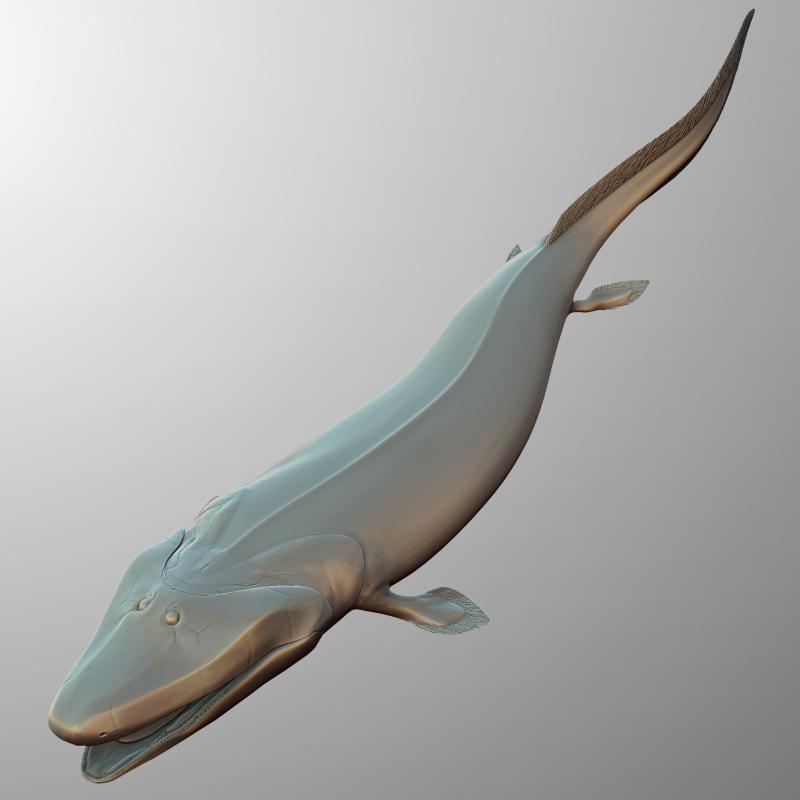I really wanted this next installment to be a Well Said! But then I found this  short video in the It’s Okay To Be Smart series, produced by PBS Digital Studios, and I couldn’t resist. The video starts off with the narrator, Joe Hanson (a Ph.D. in biology, for what it’s worth), introducing photos of his parents, grandfather, and great-grandfather and declaring that they’re all human. No argument here. But then he introduces us to his “grandfather 185 million generations removed” and things get …fishy (ha!). The ancestor shown is Tiktaalik roseae. Waah waah. I don’t think so.
short video in the It’s Okay To Be Smart series, produced by PBS Digital Studios, and I couldn’t resist. The video starts off with the narrator, Joe Hanson (a Ph.D. in biology, for what it’s worth), introducing photos of his parents, grandfather, and great-grandfather and declaring that they’re all human. No argument here. But then he introduces us to his “grandfather 185 million generations removed” and things get …fishy (ha!). The ancestor shown is Tiktaalik roseae. Waah waah. I don’t think so.
Hanson continues to draw animals from a stack of images of his direct patrilineal ancestors (father, grandfather, great-grandfather, great-great grandfather…etc.): Homo erectus (75,000 generations or 1.5 million years ago [NB: Hanson says that Homo erectus is not a human, but many anthropologists would disagree, it being in the Homo genus]), Proconsul (1.5 million generations or 25 million years ago), Plesiadapis (15 million generations or 75 million years ago), Juramaia (120 million generations or 160 million years ago), Hylonomus (165 million generations or 300 million years ago), and Tiktaalik (185 million generations or 375 million years ago).
Do you agree with me that this deserves a big Say What? Why is this sightseeing tour along Hanson’s lineage such a problem? What misconception is on display? You know what? Maybe this time, I’ll just come out with it. Actually, I can let Joe Hanson do some of the work for me. He explains:
“Evolution happens like a movie, with frames moving by both quickly and gradually, and we often can’t see the change while it’s occurring. Every time we find a fossil, it’s a snapshot back in time, often with thousands of frames missing in between and we’re forced to reconstruct the whole film.”
That’s right! But here’s the kicker: because each fossil is just a snapshot, we can never, ever know that fossil A is a direct ancestor of organism B. Do we share a common ancestor with each of the organisms featured in the film? You bet. But are those organisms our direct ancestors? We have no hope of knowing. I wonder, and this might be overly pedantic of me, but one usually only uses the “removed” terminology for cousins. When Hanson said that Tiktaalik is his “grandfather 185 million generations removed,” did he mean to say that Tiktaalik is his cousin 185 million times removed, because that could work.
For a more authoritative description of why the fossil record can’t establish direct ancestry, here is a quote, dug up by NCSE’s quote-master extraordinaire Glenn Branch, from Henry Gee’s In Search of Deep Time:
It is possible, of course, that the fossil really did belong to my lineal ancestor. Everybody has an ancestry, after all. Given what the Leakeys and others have found in East Africa, there is good reason to suspect that hominids lived in the Rift before they lived anywhere else in the world, so all modern humans must derive their ancestry, ultimately, from this spot, or somewhere near it. It is therefore reasonable to suppose that we should all be able to trace our ancestries, in a general way, to creatures that lived in the Rift between roughly 5 and 3 million years ago. So much is true, but it is impossible to know, for certain, that the fossil I hold in my hand is my lineal ancestor. Even if it really was my ancestor, I could never know this unless every generation between the fossil and me had preserved some record of its existence and its pedigree. The fossil itself is not accompanied by a helpful label. The truth is that my own particular ancestry—or yours—may never be recovered from the fossil record.
All in all, this one leaves me feeling frustrated (and I’m not the only one—read through the comments to the post on Jerry Coyne’s blog, for example). PBS has a history of top-notch evolution programming; why did Hanson fall into this trap? Why not show the stack of photos as a system of branching lineages? I know that it might seem more “viewer-friendly” to say that Tiktaalik is Hanson’s great185,000,000 grandfather, but is it so much worse to say that Tiktaalik and Joe share an ancestor that lived around 185,000,000 generations ago? If it’s “okay to be smart” (which it is—smart is the best!), can’t it be okay to be accurate?
So there you go. A little rant from yours truly, and I don’t feel good about it. Please send me some examples of effective and accurate science communication—I’d really like to write a Well Said!
Oh! And look! We got a shout out from i09! Help continue to grow the audience for NCSE's blog by spreading the word via Twitter (follow @NCSE and @keeps3), FaceBook, e-mail, skywriting, carrier pigeon…you get the idea.

